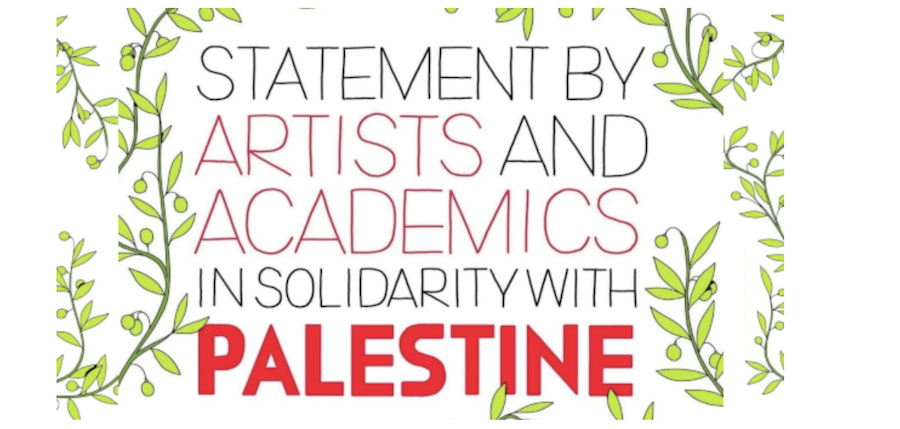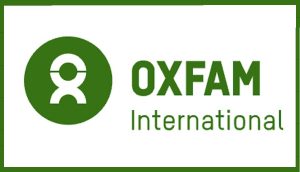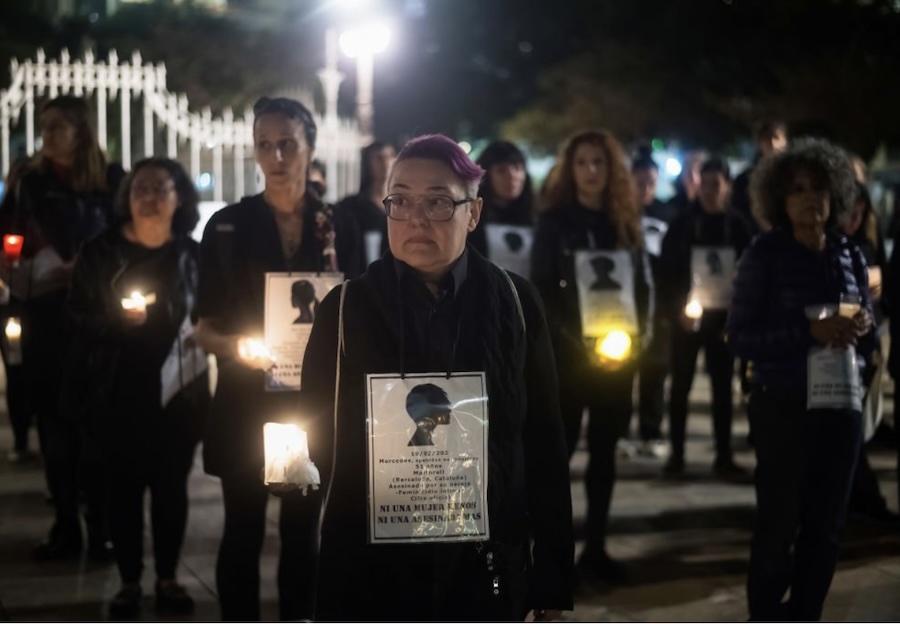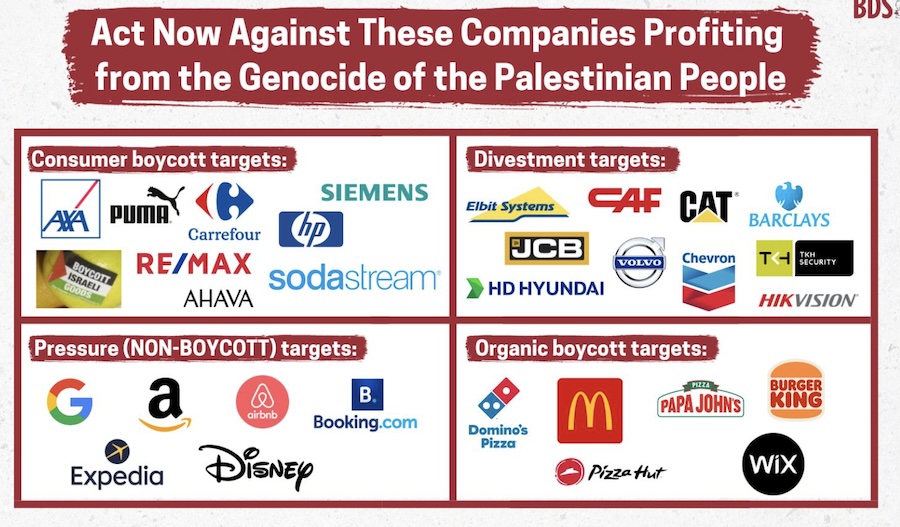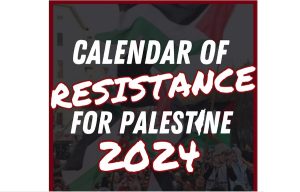. TOLERANCE & SOLIDARITY .
A press release from the United Nations Alliance of Civilizations
The United Nations Alliance of Civilizations (UNAOC) is pleased to announce the latest recipients of its Youth Solidarity Fund (YSF).
UNAOC received over 600 applications from 86 countries to consider for funding and capacity-building support. Seven youth-led organizations across three continents were selected, following a rigorous evaluation process, to implement projects contributing to the promotion of peaceful societies based on their creative approaches to building peaceful communities through intercultural and interfaith dialogue and their potential to have a positive impact on their respective communities.
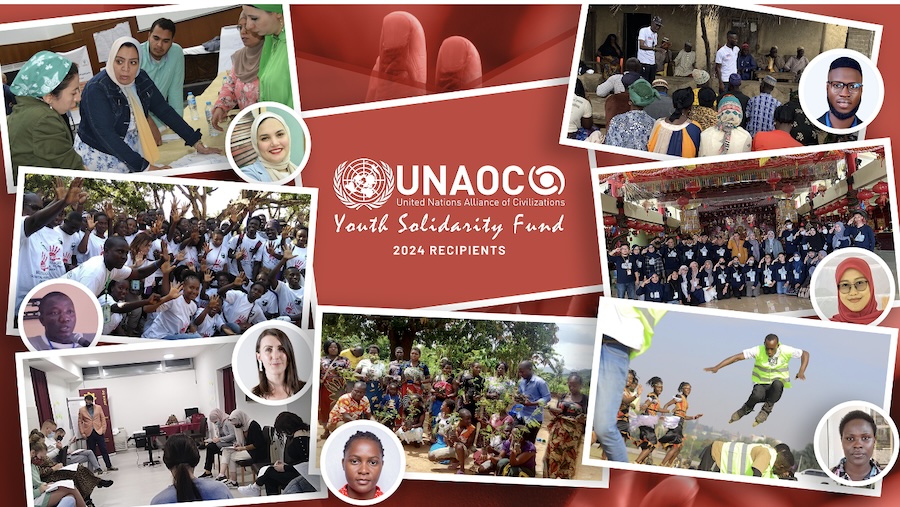
The seven recipients join a group of 73 other youth-led organizations that have benefited from YSF. Since it was established in 2008, YSF has contributed to advancing the implementation of UN Security Council Resolution 2250 by providing opportunities for partnership, capacity-building and financial means to young people to carry out activities that prevent violent conflict, and promote peace and social inclusion.
Further, YSF continues to be one of the leading mechanisms in the UN system that works directly with young people to realize the Sustainable Development Goals and drive positive change in their communities and societies.
All of the selected projects are developed and implemented by young people. While their projects frequently target other young people, they have the potential to impact entire communities by involving religious and political leaders, policymakers, educational institutions, and media entities. UNAOC supports projects that reach out to, and connect, marginalized youth from diverse socioeconomic, cultural, and religious backgrounds to foster broader and transformative engagement of all youth and reduce polarization in their communities.
In addition to seed funding, YSF recipients receive technical support to strengthen the implementation of their projects. Workshops and training sessions to boost their intercultural and peacebuilding competencies are delivered alongside mentorship guidance to bolster organizational development.
The Youth Solidarity Fund Recipients are:
1. Community Engagement for Peace and Conflict Resolution by Ikon Initiative for Sustainable Development, Sierra Leone
Ikon Initiative for Sustainable Development aims to address the issue of election-related violence in Bombali district, northern Sierra Leone, which often undermines electoral processes and generates unrest, hatred and mistrust among community members. By using intercultural dialogue, sports and drama, the initiative strives to promote peaceful coexistence, create safe spaces for open conversations, foster empathy and equip community members with conflict resolution skills.
(continued in right column)
Youth initiatives for a culture of peace, How can we ensure they get the attention and funding they deserve?
(continued from left column)
2. Amplifying Community Voices for Sustainable Peace in the Rwenzori region by Access Youth Initiative Uganda, Uganda
Access Youth Initiative Uganda aims to focus on strengthening engagement of young people in peacebuilding and preventing violent extremism through their meaningful inclusion in mediation platforms, dialogue sessions, youth camps and sport tournaments. The initiative seeks to develop youth peace champions while integrating intergenerational exchange, community service and mentorship with innovative information and communication technology and sports activities to build resilient relationships and engage in intercultural conversations for peace.
3. Training of Young People to Promote Peace “NO KUDJI PAZ” by FINSJOR – Young Girls Social Intervention Forum, Guinea-Bissau
FINSJOR aims to increase awareness of young people to promote peacebuilding and conflict resolution in their communities and support the national development process by equipping young people with skills in non-violent communication. Additional activities, such as radio debates, school campaigns and conferences, will explore the root causes and consequences of ethnic tensions in the country.
4. Engaging Youth in Increasing Religious Tolerance Awareness through Online Peace Narrative Campaigns to Safeguard Religious Sites by Yayasan Pemberdayaan Masyarakat Indonesia Cerdas (YPMIC), Indonesia
YPMIC aims to respond to a rise in online radical religious views and vandalism of religious sites involving youth by actively engaging young people in creating and spreading peace narratives online and offline. The project aspires to increase religious tolerance among young people in South Sulawesi region through peace training, religious site visits, digital campaigns, talk shows and exhibitions.
5. Bridging Faiths: Fostering Interreligious Tolerance Among Muslim and Christin Youth in Zomba, Malawi by Zomba Center for Creative Arts (ZOCCA), Malawi
ZOCCA aims to address increased violence and incidents of religious intolerance among young people in Zomba, Malawi through sport, dialogue sessions, interfaith workshops, community service projects and cultural exchange events. These activities intend to promote interreligious dialogue, foster empathy and respect and encourage cooperation among young people from different faith backgrounds.
6. Detect, React, Protect by Youth for Peace, Bosnia and Herzegovina
Youth for Peace aims to address ever-present tensions and hate speech between people of Serbia and Bosnia and Herzegovina by bringing together youth from both sides of the border to work together to foster better understanding among the two nations. Focusing on peace education and freedom of religion and belief, Youth for Peace will strive to create a space for safe interaction, open dialogues and and better relations.
7. Bridging Communities: Promoting Intercultural and Interfaith Dialogue Among African and Egyptian Youth in Egypt – Diverse Voices, United Communities by AlMahrousa for Development and Participation (MDP), Egypt
MDP aims to bring youth from diverse cultural and religious backgrounds together with migrants and their peers in Greater Cairo communities to foster mutual understanding, collaboration and the promotion of the values of peace and inclusivity through youth-led workshops, interfaith and intercultural dialogues and public awareness campaigns. Young leaders from both groups will aim to develop plans of action and community initiatives to counter social polarization and ethnic/religious extremism.
– – – – – –
If you wish to make a comment on this article, you may write to coordinator@cpnn-world.org with the title “Comment on United Nations Alliance of Civilizations” and we will put your comment on line. Because of the flood of spam, we have discontinued the direct application of comments.
